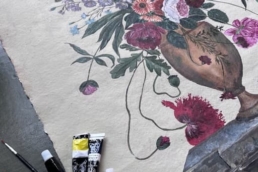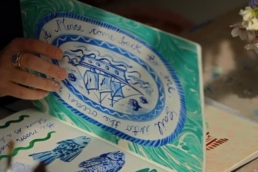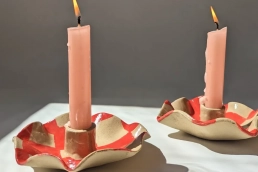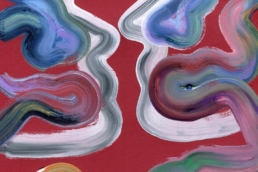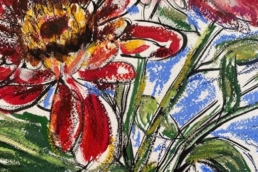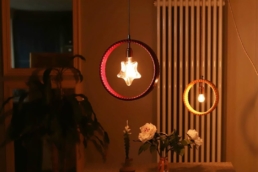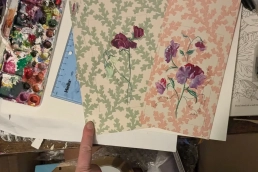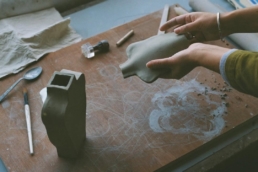Blurring the lines between nature and fantasy, Helen Wilde creates richly layered textile artworks that burst with texture, movement, and colour. A Decorative Arts graduate and leading voice in modern embroidery, Helen transforms paper, fabric, yarn, and silk into enchanting botanical dreamscapes and tactile wildlife scenes.
Her evolving palettes mimic the seasons, while her innovative use of humble stitches, 3D forms, ceramic elements and painterly detail elevate each piece into something truly extraordinary. With work exhibited across the U.S. and collected around the world, from Elle Decoration features to The Dorchester’s walls, Helen continues to reimagine what fibre art can be.
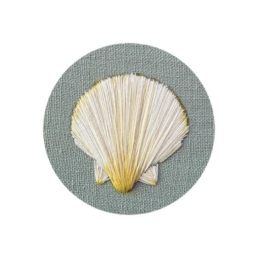
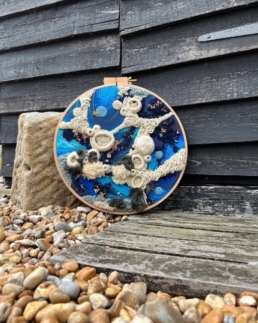
1. Can you tell us a bit about yourself and your artistic journey?
I am a multidisciplinary artist, based in Derbyshire, my art is predominately led by embroidery but takes many forms, from textiles to paper and more recently ceramics & is inspired by my career so far, the places I’ve been and the people whom I have been lucky enough to work with such as Daniel Hanson, Vivienne Westwood and Tom Phillips.
2. What inspired you to pursue your craft? Was there a defining moment or influence that sparked your passion?
My family have always been very creative with an emphasis on traditional craft, being encouraged to pursue a handmade craft was nurtured from an early age and was encouraged even more during my degree – all based around traditional craft and practices.
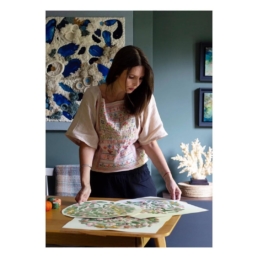
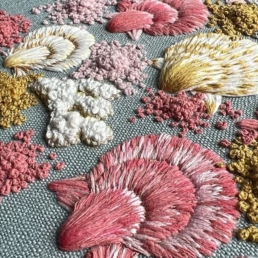
Your craft
3. How would you describe your work in three words?
Textural, imaginative, evolving.
4. What materials or techniques do you use, and why are they important to your process?
I predominantly use embroidery, whether it be textile or paper based. The techniques are a combination of traditional stitches and contemporary explorations. Thus creating the forms and textures so featured within my collections.
Can you tell us about a favourite piece you’ve created and the story behind it?
One of my favourite season collections was a series of paper embroideries based around the gardens of Derek Jarman’s ‘Prospect Cottage’ – we spent a wonderful Summer in Dungeness, a true escape and then these pieces influenced a collection commissioned by the ‘Dorchester Hotel’, Hyde Park. London.
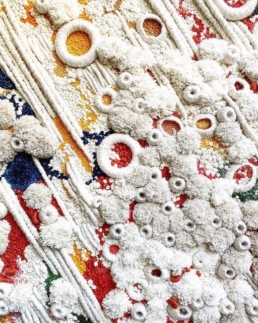
Creative process
6. What does a typical day in your studio or workshop look like?
I always start with tea, a litre of tea must be consumed. My studio is in the centre of my home, a 300 year old cottage that dictates where I will work during the day – in the Summer I’ll work outside, the Winter by the fire.
7. Do you have any unique rituals or habits that help you stay creative?
I have several folders with hundreds of images I have taken during my travels, whether these be sea shells and coral reefs, the gardens of Derek Jarman, or studies of seashells – every few weeks I’ll decide on my new direction by looking through these images & seeing what catches my eye.
Challenges and successes
8. What’s the biggest challenge you’ve faced as a maker, and how did you overcome it?
Deadlines I find increasingly difficult within commercial projects – not sleeping helps.
9. What’s been your proudest moment or achievement so far?
Being commissioned by the ‘Dorchester Hotel’ to create a collection of work for their new hotel suites. A legacy collection that will hang there for possibly longer than my lifetime.
10. What’s your favourite quote you’ve ever heard about your work? Who said it, or what was the name of the publication?
“An ambassador for modern day embroidery”
– Elle Decoration
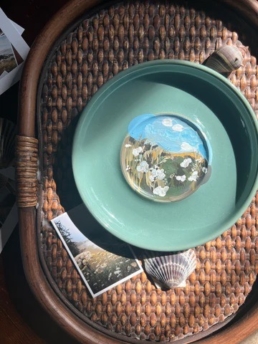
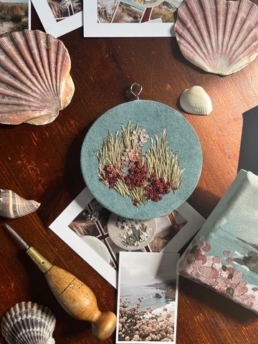
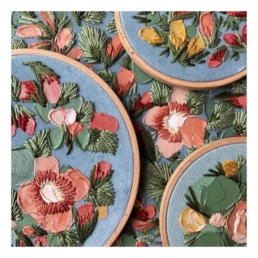
Inspiration
11. Where do you draw inspiration from for your work? What sparks your imagination and creativity?
Currently and more often than not, the ocean, coral reefs and seashells.
12. Do you have a favourite artist, maker, movement, or tradition that has influenced your craft?
There are many people that I admire for their use of colour, texture and form. People like Geoffrey Bawa, for his approach to his practice, Tom Phillips for his use of colour, texture and experimentation and Jacques Cousteau for his exploration of the ocean are people I find myself returning to.
13. How does colour influence your practice; is it an important part of your process? Do you have a particular palette or favourites? Any go-to sources for colour inspiration?
Colour plays an enormous role, normally influenced by the natural environment – the blues and greens of the ocean which then influences every aspect of my life – including my home.
Perspectives and goals
14. What role does your environment play in shaping your creativity?
I like to surround myself by the themes I’m passionate about, unfortunately not living near the ocean means I have a wonderful collection of seashells.
15. What do you want people to feel when they experience your work?
Escapism.
16. What are you currently working on, and what excites you most about it?
A collection for a gallery based on the Scilly Isles – think rock pools, which I adore.
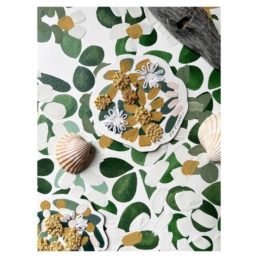
Advice and reflection
17. What advice would you give to someone starting out as a maker?
Try everything and anything, everything is practice.
18. If you could go back to the start of your career, what advice would you give your younger self?
Believe in yourself and your half way there.

Closing thoughts
19. If you could collaborate with any artist, past or present, who would it be and why?
Not necessarily and artist, but a movement. The Bauhaus – traditional methods, contemporary practice – heaven!
20. Where can people find your work, and how can they support you?
My own website, ovobloom.com
Waterside Gallery, St Mawes.
Bryher Gallery, Bryher, Isle of Scilly
Nahcotta Gallery, USA
Helen Wilde’s textile artworks blur the line between the real and the imagined, transforming natural inspiration into vibrant, multi-dimensional pieces. From delicate stitches to bold painterly textures, each creation reflects her unique vision where botanical beauty, colour, and craftsmanship meet. With an ever-evolving palette and a deeply intuitive approach to materials, Helen invites us to see embroidery not just as a technique, but as a richly expressive art form.
Explore Helen’s latest collections and follow her creative journey:
Support Helen by exploring her vivid, nature-inspired world online, discovering her sculptural fibre pieces, and following her artistic journey as she continues to stitch new stories with imagination and care.


